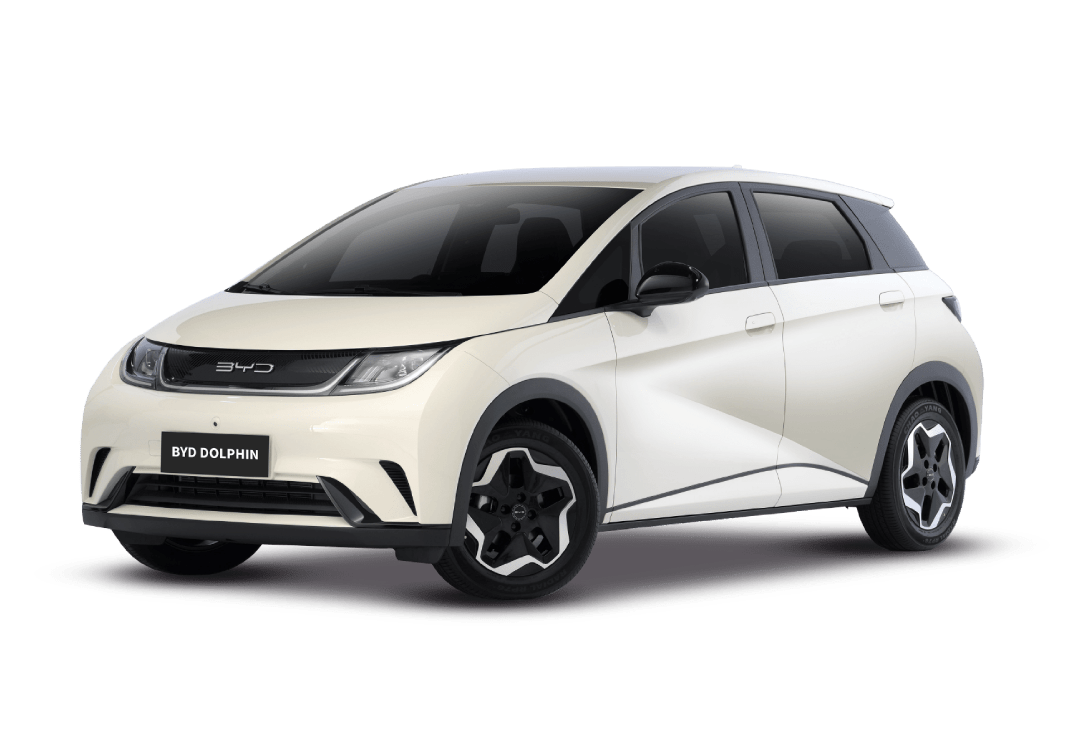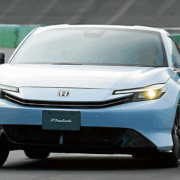2024 BYD Dolphin: A standard-setter for commuter EVs

If you read stories here and abroad about cars, you would often encounter metaphors related to warfare.
One particularly common phrase (perhaps bordering on cliché already) is the “opening salvo.” In military terms, a salvo refers to the simultaneous firing of guns, bombs or missiles in a battle or a ceremony – it became part of the English language from Italian in the late 16th century.
But opening salvo is actually idiomatic, used particularly in verbal attacks like the opening statement of a speech or debate. The automotive industry uses the phrase to refer to a carmaker’s first attempt at captivating (and eventually, capturing) the market with an all-new model.
Chinese car brand BYD has been in the Philippines for well over a decade. But it only surged in popularity following the takeover of ACMobility, the automotive arm of the massive Ayala Group, last August 2023.
At the time, the ATTO 3 crossover was still quite far off, so the electric-vehicle (EV) manufacturer’s so-called opening salvo was the Dolphin hatchback. The swoopy, oceanic friend is what put BYD on the map locally and, arguably, helped set off the popularization of battery EVs in the Philippines (aided by generous government incentives).
Over a year down the line, does the BYD Dolphin still command the trail that it has set? We tested one to find out.
Attractive styling
The Dolphin’s looks happily still stand out, even as more and more show up on our roads.
Upward-swept LED headlights blend well into the front “grill,” with downward-swept lower-bumper openings balancing out the EV’s lines. Character lines along the door handles and the huge slashes on the side prevent the Dolphin from looking like a tiny van – the two-tone, 16-inch alloy wheels add to the funky look of this hatchback.
Out back, full-length LED taillights are framed by a petite tailgate spoiler and lower-bumper openings that mirror those up front. However, I feel that the Cream White paintjob makes it look a bit anonymous.
Premium, futuristic interior
What certainly isn’t anonymous is the Dolphin’s spacious five-seat cabin.
Lined in soft, two-tone leather upholstery, it’s a splendid place to sit in. The dogbone-shaped dashboard trim, along with the circular air-conditioning vents, still offer originality in a market awash with hum-drum hatchbacks.
Meanwhile, the 12.8-inch rotating touchscreen infotainment system offers good responsiveness and clarity, especially for the standard 360-degree camera system. The addition of wireless Apple CarPlay and Android Auto is very welcome, even for Luddites like me who have just discovered the wonders of Spotify Premium.
Another nifty design feature is the row of switches on the center console – the leftmost knob controls the transmission, while the others handle the powerful climate-control system. Clean it may look, but I would prefer a separate gear selector and more buttons to control the Dolphin’s functions, as diving through all the submenus in the touchscreen gets wearisome.
Other little things that detract from the premium riding experience are the hard plastics on the dashboard and door cards, as well as the strange lack of rear cabin lights. The generous 345-liter cargo area expands to 1,310 liters with the rear seats folded, but the high sill can make removing heavy items rather difficult.
Adequate performance
On the move, the Dolphin definitely feels like no other gasoline-powered hatchback on the market.
With 94 horsepower and an instantaneous 180 Newton-meters of torque, the little BYD has a claimed 0 to 50 km/h time of a rather impressive 3.9 seconds, while standing starts to 100 km/h take an average 12.3 seconds. Such acceleration makes the Dolphin a perky city commuter, more so than even the brisk Honda City.
The Dolphin also gets strong brakes, controlled by a firm pedal. However, it needs some work in the handling department – the excessive damper stroke means it is wallowy over bumps, while the light yet numb steering doesn’t provide much confidence during more spirited driving.
Nonetheless, the all-electric drivetrain means the interior is as loud as a closed cathedral, save for the pronounced tire roar at higher speeds. And with a 44.9-kWh Blade Battery, the Dolphin has a claimed maximum NEDC range of 405 kilometers.
But in my testing, the EV’s energy consumption was at 7.1 to 7.7 km/kWh in the city and 9 to 10 km/kWh on the expressway. As such, reckon on a more realistic 300 to 320 kilometers of range in the city and 380 to 420 kilometers of range on the open road.
Charging is through a CCS2/Type 2 port, with a DC fast charger able to charge the Dolphin from 30 to 80 percent in just 30 minutes and the free 7-kWh AC charger doing 0 to 100 percent in about 8 hours. There’s also a portable charger for 220-volt outlets (running at around 2 kWh) and an extension cord for vehicle-to-load functions, so you can run appliances off of the EV.
More ammo needed
In the safety stakes, the P1,398,000 Dolphin is up to scratch with things like front, side and curtain airbags, as well as traction control and ISOFIX child-restraint anchors.
However, BYD Philippines needs to do more to keep up with rivals like the Honda City RS and the all-new JAC Ytterby EV hatchback. Both are not only cheaper, but come with life-saving active-safety systems as standard.
The Dolphin is also hopelessly outgunned by the Ytterby – it may look like a startled squirrel, but the top-spec 505 PRO has 40 more horsepower and an additional 100 kilometers of claimed maximum range, as well as niceties like air-conditioned front seats, an electrically adjustable driver’s seat and a moonroof.
Given that more powerful and better-equipped Dolphins are available in other countries, such upgrades would certainly turn BYD’s opening salvo into a continuous volley of fire in the Philippines’ fledgling EV market.

















